Kingdom Animalia Class Mammalia Superfamily Dipodoidea Gestation period 25 – 35 days | Phylum Chordata Order Rodentia Lifespan 2 – 3 years | |
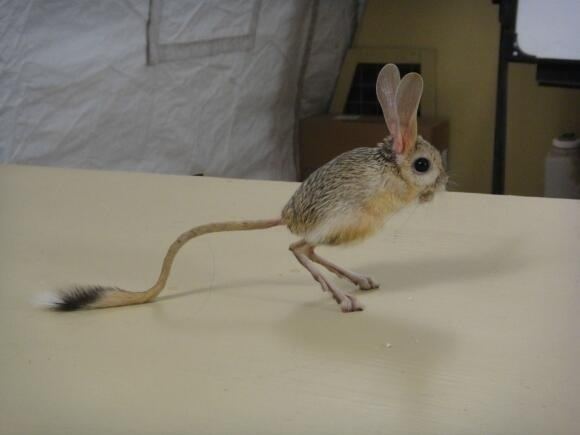 | ||
Family DipodidaeFischer de Waldheim, 1817 Mass Baluchistan pygmy jerboa: 3.8 g Speed 24 km/h (Maximum, Running) Length Baluchistan pygmy jerboa: 4.4 cm Tail length Baluchistan pygmy jerboa: 8 cm Representative species Northern three‑toed jerboa, Baluchistan pygmy jerboa, Lesser Egyptian jerboa, Long‑eared jerboa, Bobrinski's jerboa Similar Baluchistan pygmy jerboa, Long eared jerboa, Lesser Egyptian jerboa | ||
Pygmy jerboa warning worlds cutest mouse
The jerboa (from Arabic: جربوع jarbūʻ ) forms the bulk of the membership of the family Dipodidae. Jerboas are hopping desert rodents found throughout Northern Africa and Asia east to northern China and Manchuria. They tend to live in hot deserts.
Contents
- Pygmy jerboa warning worlds cutest mouse
- Anatomy and body features
- Behavior
- Diet
- Communication and perception
- Reproduction
- Classification
- References
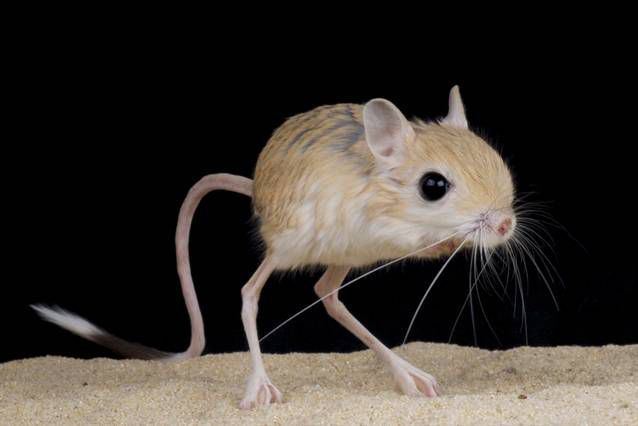
When chased, jerboas can run at up to 24 kilometres per hour. Some species are preyed on by little owls (Athene noctua) in central Asia. Most species of jerboa have excellent hearing that they use to avoid becoming the prey of nocturnal predators. The typical lifespan of a jerboa is around six years.
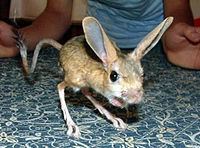
Anatomy and body features
Jerboas look somewhat like kangaroos as they have many similarities such as long hind legs, very short forelegs and long tails. Jerboas move around their environment the same way a kangaroo does, which is by hopping. Like other bipedal animals, their foramen magnum—the hole at the base of the skull—is forward-shifted, which enhances two legged locomotion. The tail of a jerboa can be longer than its head and body and it is common to see a white cluster of hair at the end of the tail. Jerboas use their tail to balance when hopping, and as a prop when sitting upright. Jerboa fur is fine, and usually the colour of sand. This colour usually matches the environment the jerboa lives in (an example of cryptic colouration). Some species of the jerboa family have long ears like a rabbit, and others have ears that are short like those of a mouse or rat.
Behavior
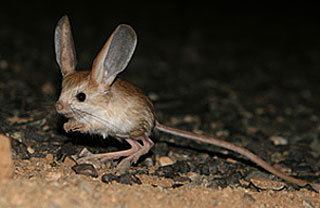
Jerboas are nocturnal. During the heat of the day they shelter in burrows. At night they leave the burrows due to the cooler temperature of their environment. They dig the entrances to their burrow near plant life, especially along field borders. During the rainy season they make tunnels in mounds or hills to reduce the risk of flooding. In the summer, jerboas occupying holes plug the entrance to keep out hot air and, some researchers speculate, predators. In most cases burrows have an emergency exit that ends just below the surface or opens at the surface but is not strongly obstructed. This allows the jerboa to quickly escape predators.
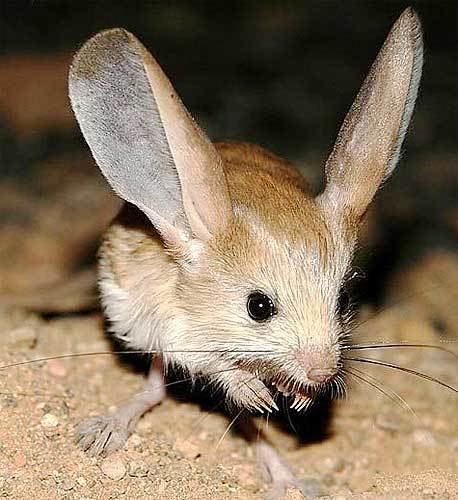
Related jerboas often create four types of burrows. A temporary, summer day burrow is used for cover while hunting during the daylight. They have a second, temporary burrow used for hunting at night. They also have two permanent burrows: one for summer and one for winter. The permanent summer burrow is actively used throughout the summer and the young are raised there. Jerboas hibernate during the winter and use the permanent winter burrow for this. Temporary burrows are shorter in length than permanent burrows.
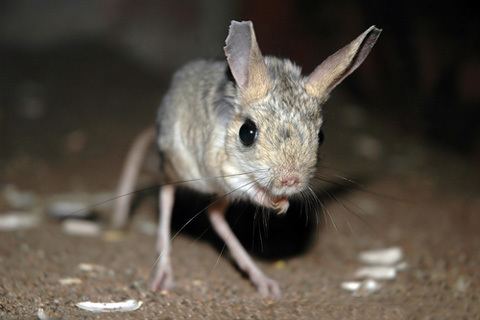
Jerboas are solitary creatures. Once they reach adulthood, they usually have their own burrow and search for food on their own. However, occasional "loose colonies" may form, whereby some species of jerboa dig communal burrows that offer extra warmth when it is cold outside.
Diet
Most jerboas eat plants. Some species eat beetles and other insects they come across, but they can not eat hard seeds. Unlike gerbils, jerboas are not known to store food.
Communication and perception
Many species within the family Dipodidae participate in dust bathing. Dust bathing is often a way to use chemical communication. Their keen hearing suggests they may use sounds or vibrations to communicate.
Reproduction
Mating systems of closely related species in the family Dipodidae suggest that they may be polygynous. For some closely related jerboa species mating usually happens a short time after awaking from winter hibernation. A female breeds twice in the summer, and raises from two to six young. Gestation time is between 25 and 35 days. Little is known about parental investment in long-eared jerboas. Like most mammals, females nurse and care for their young at least until they are weaned.
